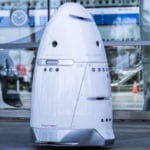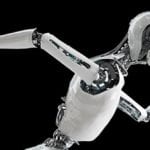 Weird Stuff
Weird Stuff  Weird Stuff
Weird Stuff  Mysteries
Mysteries 10 Tragic Disappearances and Deaths in Joshua Tree National Park
 History
History 10 Ways Childhood Really Sucked in the Old West
 Music
Music 10 Name Origins of Famous Bands from the 1990s
 Religion
Religion 10 Biggest Turnarounds by the Catholic Church
 Weird Stuff
Weird Stuff 10 Unbelievable Times Laws Had Unintended Consequences
 Humans
Humans Ten Historic Women Who Deserve Way More Credit Than They Got
 Movies and TV
Movies and TV 10 Films That Spawned Major Lawsuits
 History
History Ten Times Towns Were Wiped Off the Face of the Earth
 Creepy
Creepy 10 of the Most Disturbingly Haunted Public Houses in the UK
 Weird Stuff
Weird Stuff 10 Niche Subcultures That Are More Popular Than You Might Think
 Mysteries
Mysteries 10 Tragic Disappearances and Deaths in Joshua Tree National Park
 History
History 10 Ways Childhood Really Sucked in the Old West
Who's Behind Listverse?

Jamie Frater
Head Editor
Jamie founded Listverse due to an insatiable desire to share fascinating, obscure, and bizarre facts. He has been a guest speaker on numerous national radio and television stations and is a five time published author.
More About Us Music
Music 10 Name Origins of Famous Bands from the 1990s
 Religion
Religion 10 Biggest Turnarounds by the Catholic Church
 Weird Stuff
Weird Stuff 10 Unbelievable Times Laws Had Unintended Consequences
 Humans
Humans Ten Historic Women Who Deserve Way More Credit Than They Got
 Movies and TV
Movies and TV 10 Films That Spawned Major Lawsuits
 History
History Ten Times Towns Were Wiped Off the Face of the Earth
 Creepy
Creepy 10 of the Most Disturbingly Haunted Public Houses in the UK
10 Strange Robots That Could Potentially Save Lives
Hollywood movies often portray robots as evil and frightening. Sci-fi films like Terminator and The Matrix were so successful and influential that they spawned robophobia—the irrational fear of robots and artificial intelligence—among many people.
But robots are perfectly harmless in real life. With numerous advances in technology, intelligent robots will soon make our lives more comfortable, our jobs easier, and our world a better place in which to live.
10 Tru-D
If a fluorescent light and a Star Wars droid ever got married and had a baby, it would look like Tru-D. A robot that kills viruses and bacteria, Tru-D is used in more than 300 hospitals around the world.
This strange-looking robot was invented by Jeff Deal and his brother. They tested a prototype in their garage by using several plates filled with bacteria. After the prototype emitted ultraviolet light for a few minutes, the plates were completely free of bacteria.
In 2014, Tru-D was tested during the height of the Ebola crisis in Africa. The results were astounding. The robot was able to eradicate the virus completely—but only on facilities and equipment.
Tru-D can’t be used on humans. The ultraviolet light emitted by the robot is so strong that it can damage human DNA. Nevertheless, Tru-D is still valuable and has the potential to save hundreds, if not thousands, of lives each year.
Duke University conducted a study to test the efficacy of Tru-D. The researchers found that “the instances of new patients picking up the virus declined by more than 30 percent” when the robot was used.
Aside from killing germs with its powerful ultraviolet light, Tru-D can also talk, shut down automatically when a door is opened, and inform its operator that it has completed the job.
9 HRP-2 Kai And Jaxon
Anime is probably one of Japan’s greatest contributions to modern pop culture. It’s everywhere—in songs, movies, food, hairstyles, toys, and more. So it’s no surprise that a team of Japanese robotic engineers created anime-inspired robots.
In 2015, HRP-2 Kai and Jaxon, two anime-inspired robots, were unveiled to the public during the International Robot Exhibition in Tokyo. Unlike anime which seeks to entertain, these life-size humanoid robots actually save people’s lives.
With Japan situated in the Ring of Fire, it’s prone to natural disasters such as the 2011 earthquake and tsunami. As a result, many Japanese robotic engineers are developing robots that could help during emergency situations.
The creators of HRP-2 Kai and Jaxon see them as the future of search and rescue. These two-legged humanoid robots can go places that are inaccessible or dangerous for people.
During the International Robot Exhibition in Tokyo, HRP-2 Kai and Jaxon displayed their awesome search and rescue skills, such as going through debris, overcoming obstacles, and extinguishing fires.
8 Pleurobot
Robotic engineers from Switzerland have developed a robot that can mimic the movements of a salamander. Dubbed Pleurobot, this robotic salamander can walk, go around corners, and even swim. However, it has to put on a bathing suit before it can go in the water.
Pleurobot’s creators are hoping that neuroscientists will use their robot. That way, they can gain in-depth knowledge on how the nervous system (especially the spinal cord) really works and develop new treatments to help patients with spinal injuries walk again.
Why would scientists pattern a robot after a salamander? Apparently, salamanders are significant creatures from an evolutionary standpoint. They’re even more ancient than dinosaurs.
Aside from its amphibious qualities, the salamander has a body shape that closely resembles “the fossils of the first terrestrial vertebrates.” This makes the salamander an important animal for scientific research.
Pleurobot can also be used to save lives. With its special design, this robotic salamander can navigate through dangerous places and help with search and rescue after natural disasters such as earthquakes.
7 TAUB
Miniature robotics are gaining the interest of many engineers. Due to their tiny sizes, miniature robots can be used in many applications, including search and rescue, surveillance, and cleaning up oil spills. In addition, it is efficient and cost-effective to create miniature robots.
In 2015, Tel Aviv University and ORT Braude College unveiled TAUB, a robot whose creation was inspired by locusts. TAUB has no shell or wings, so it doesn’t resemble a locust. But it does possess the amazing physical abilities of the insect.
TAUB can jump as high as 3.5 meters (11.5 ft) and reach a horizontal distance of 1.4 meters (4.5 ft). Even more amazing, it can jump 1,000 times before it runs out of battery power.
The engineers working on the TAUB project used 3-D-printed plastic, carbon rods, and steel springs to create this miniature robot. Although TAUB is only 10–13 centimeters (4–5 in) long, it is literally making a giant leap for robotics in emergency response and surveillance systems.
6 Flying Robots
Flying robots (aka drones) have mainly been used for two things—military operations and fun. For years, the US military has used flying robots to attack and monitor enemies. On the other hand, ordinary people can easily buy drones on the Internet for less than $100 and do whatever they want with these robots.
But a group of researchers at the University of Twente in the Netherlands is trying to elevate the purpose of flying robots. They are looking for ways to use these robots to save people’s lives, especially during catastrophes like avalanches.
Flying robots can hover over dangerous places that human workers cannot access. Furthermore, these robots can more easily locate victims because they can “see” more.
Scientists expect that flying robots will become an indispensable part of search and rescue in the near future—especially in areas like the Swiss Alps where avalanches are common.
5 Snake Robots
Many people are afraid of snakes because they are venomous. It doesn’t help that they are also slimy, scaly, and slithery. But that didn’t stop Howie Choset and his team from Carnegie Mellon University from developing snake-inspired robots.
Thankfully, Choset’s robotic snakes are neither deadly nor gross. But they do mimic the movements of actual snakes quite accurately and eerily. These snake-inspired robots can “swim in a [moat], breach a fence, climb a flagpole, crawl through grass, [and] ride on top of bushes.”
Choset and his team also equipped these robotic snakes with a light, a camera, and sensors to help them traverse challenging terrains and various obstacles. They can also be used in surgery.
Unlike real-life snakes that can kill people, snake robots do the opposite. Choset and his team are hoping that their invention can save people’s lives during disasters such as the collapse of a mine or a building.
The special design of these lifesaving robots allows them to traverse dangerous areas that people cannot access. In the future, rescue workers would likely bring snake robots with them during search and rescue operations.
4 RoboSimian
Spaceships. Astronauts. Planets. Space Exploration. These are some of the words that come to mind when we hear the word “NASA.” We rarely associate this agency with robotics. However, NASA has been a leader in robotics development and innovation for several years.
In 2013, NASA joined the DARPA Robotics Challenge and won fifth place. Their entry was a four-footed robot that looked like a giant spider. Dubbed RoboSimian, this robot was developed by NASA’s Jet Propulsion Laboratory to aid rescue workers in natural and man-made disasters.
Unlike other robots, RoboSimian focuses on deliberation over reaction and stability over dynamics. This allows it to operate more quickly and efficiently during emergency situations.
RoboSimian—fondly called “Clyde” by its creators—can climb a set of stairs, navigate through debris and challenging terrain, open a door, cut a hole in drywall using a cordless power drill, and even drive a car.
In 2015, NASA’s Jet Propulsion Laboratory entered RoboSimian into the DARPA Robotics Competition again. As in 2013, they came in fifth place.
3 Soft Robots
Soft robots are not weak. In fact, they’re capable of executing complex tasks—such as picking up a delicate, uncooked egg—that hard robots would find difficult to do. Soft robots don’t have motors, hydraulics, or hard joints. Instead, they rely on low-pressure air to move.
In 2011, a team of Harvard University researchers publicly unveiled a soft robot with no skeleton that was inspired by worms, starfish, and squid. The robot can undulate, fit through tight spaces, and crawl. It moves quite freakishly, too.
Unlike hard robots, soft robots aren’t damaged when they fall. Nor do they get scrapes and bumps from hitting hard objects. That’s because they’re made from flexible materials called elastomers.
However, Harvard’s soft robot can be easily punctured if exposed to thorns or broken glass. Nevertheless, soft robots have huge potential in areas where a variety of movements and delicate motions are important.
2 Fish Robots
The purpose of fish robots is not to help humans but to save sea creatures. Researchers from Georgia State University and New York University are developing robotic fish that would serve as “leaders” and guide real schools of fish away from man-made disasters (such as an oil spill) or hazardous equipment (such as the underwater turbines of a power plant).
Fish robots are not new. In fact, the first prototype was developed 20 years ago by a team of researchers from MIT. Numerous advances have been made in this field of robotics, but scientists still have one big dilemma. They have not come up with the mathematical formula that would enable the fish robots to “swim together like a real school of fish.”
Fish are smart. They will only follow robots if they behave and look like real fish in a school. Scientists have developed methods to make robotic fish act and appear like real ones. But they haven’t figured out how to make the robots “swim as a coordinated unit . . . [to] gain the trust of actual schools of fish.”
1 Walk-Man
Robotic engineers from the University of Pisa and the Italian Institute of Technology have created a humanoid robot that can interact with its surroundings and use human tools. Dubbed Walk-Man, this robot was created to help during emergency situations by operating in areas that are too dangerous for human rescue workers.
Walk-Man is more than 2 meters (6 ft) tall and weighs around 120 kilograms (260 lb). It uses a 3-D laser scanner and a stereovision system to help it navigate its surroundings.
Unlike many humanoid robots, this gigantic machine is capable of using both its lower and upper body to provide balance and generate motion, allowing it to perform actions in a more “human” way.
Scientists are trying to equip Walk-Man with more advanced cognitive abilities so that it can work independently. Although autonomous operation is the ultimate goal, the robotic engineers have acknowledged that a human operator will need to control Walk-Man to complete more complex tasks.
When not busy working with MeBook—an app that transforms your Facebook into an actual book—Paul spends his time writing interesting stuff and creating piano covers. Connect with him on YouTube, Facebook, and Twitter.








